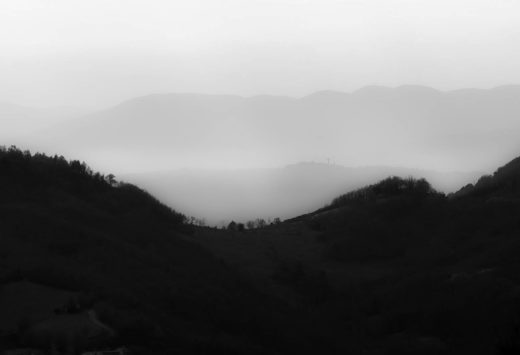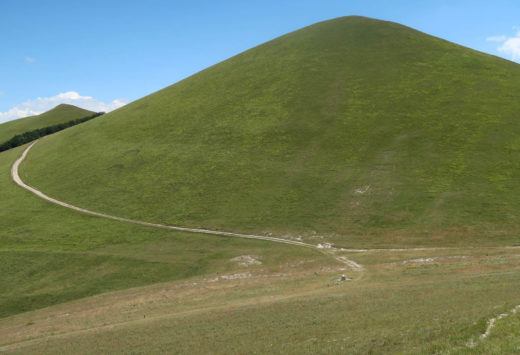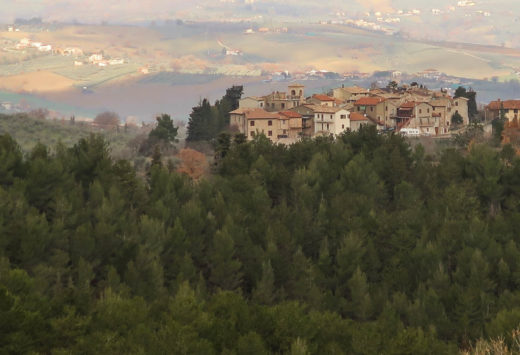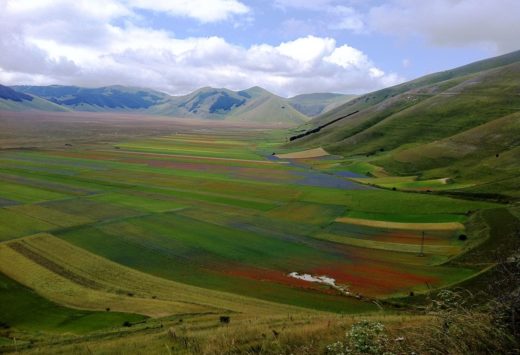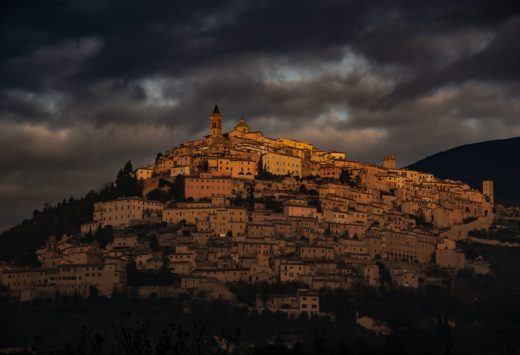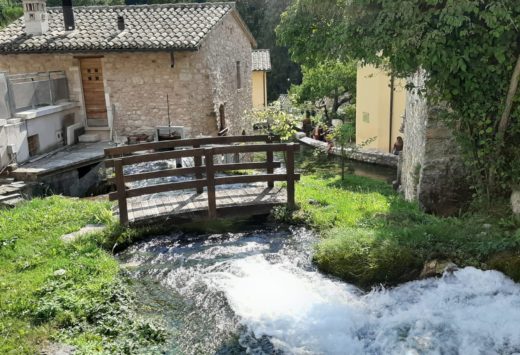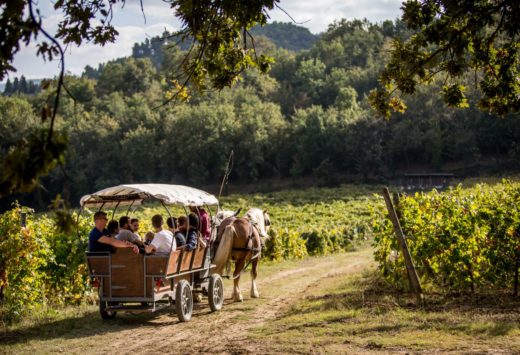According to a seventeenth century manuscript preserved in the Foligno city library and another in the Monastery of St. Croce di Sassovivo, the famous Foligno historian Ludovico Iacobilli found that the church was founded in 1094 by Bishop Bonfilio and that a few years later, in 1120, another Bishop, Andrea, had granted the structure to the Blessed Albert, abbot of Sassovivo, who was the guarantor of the construction of the annexed convent.
Whatever the true origin of the complex, the first documented presence of the church only dates back to 1138 when Pope Innocent II in the papal bull “Religiosis desideriis” reiterated and definitively sanctioned the concession of the church and convent to the monks of Sassovivo.
In 1248 the complex returned under the control of the bishop of Foligno, who in turn gave it in 1348 to the Benedictine monks of the Congregation of S. Maria del Monte Oliveto (St Mary of Mount Oliveto). It was precisely these Olivetan monks that carried out the first major renovation of the dilapidated buildings. Very few traces of this first intervention remain in the current structure, but they are recognizable in the side door of the church and in the cross vault of the sacristy.
The monks financed the expensive works and officiated in the church until 1434 when they were definitively replaced by the Hermit monks of S. Agostino (St Augustine) of the S. Maria del Popolo (St Mary of the People) congregation, who still manage it today.
In the fifteenth century the entire building was embellished with chapels and wall paintings among the most beautiful in the city of Foligno, works of important local artists such as Bartolomeo di Tommaso and Nicolò di Liberatore, known as the Alunno.
Today the Crucifix preserved in the sacristy is the most worthy work to mention.
The architectural interventions, however, were not yet completed and between the seventeenth and eighteenth century the church and convent underwent new important structural changes that gave them the modern appearance that locals and visitors can admire today. The works lasted for six years, costing the considerable sum of 2050 “scudi” and involved the intervention of the famous architect Luigi Vanvitelli, due to a dispute among the builders.
The events of the church did not end, and between 1798 and 1799, following the French invasion, the ecclesiastical building was transformed into a military warehouse.
It was not until 1814 that the complex was once again under the control of the Augustinians who first used it as a public school in 1861, then as the seat of the famous school of Arts and Crafts of Foligno, in 1875.
So we finally arrive at the modern age; the junior high school “Giuseppe Piermarini” has occupied the premises of the former convent since 1962.
The linear external façade is embellished by the central door, in Renaissance style, built in the eighteenth century with material from the demolished internal chapel where the most famous polyptych of the church was kept. On the left wall the signs of the old door are still visible, replaced by the current one, and on the right wall the square bell tower leans against the sacristy. The internal space is divided into three naves, the central one of greater dimensions than the two lateral ones that contain niches with frescoes from the 15th-17th centuries dedicated to various saints. The best known are those by the Alunno, a renowned local artist, on the right transept that depict the Coronation of the Virgin and the Saints Anthony Abbot and Bernardino of Siena.
The central presbytery houses the high altar behind which you can admire the very valuable double rows of walnut choir stalls, dating back to 1751.
But without doubt the great fame of the church is due to the work of Alunno, which after various vicissitudes and disputes in the city, is still preserved in the chapel of San Giuseppe (St. Joseph), in the center of the right wall of the church. This is a polyptych depicting the Nativity with Saint Sebastian, St. Nicholas of Bari, St. Michael the Archangel and St. John the Evangelist. It is a tempera on a large board (300 cm x 340 cm) commissioned in 1479 by the noblewoman of Foligno Brigida degli Elmi, widow of the merchant Michele di Nicolò Picchi.
In reality, the work was carried out only many years later in 1492 after the death of the woman. Because of its value, in 1812 it was stolen by Napoleon and kept in France until 1817 when Italy obtained partial restitution. In fact, the polyptych is today devoid of the predella or altar step, which is still preserved in the Louvre Museum.
In modern times the work has been the subject of disputes and controversies between the parish priests of the church and the municipality officials of Foligno who, on the occasion of an attempted theft, had the polyptych transferred to the Palazzo Trinci Municipal Art Gallery for a short period. Only after various events was the work returned to the original location desired by the commissioner, where today one can admire it in all its splendor.



